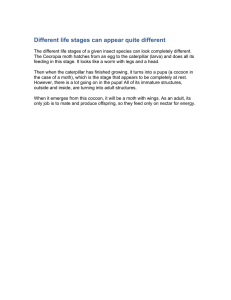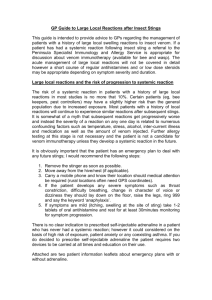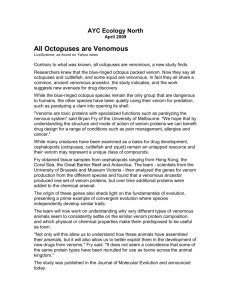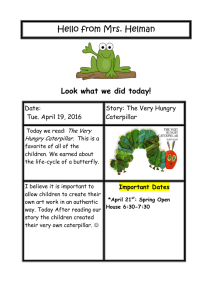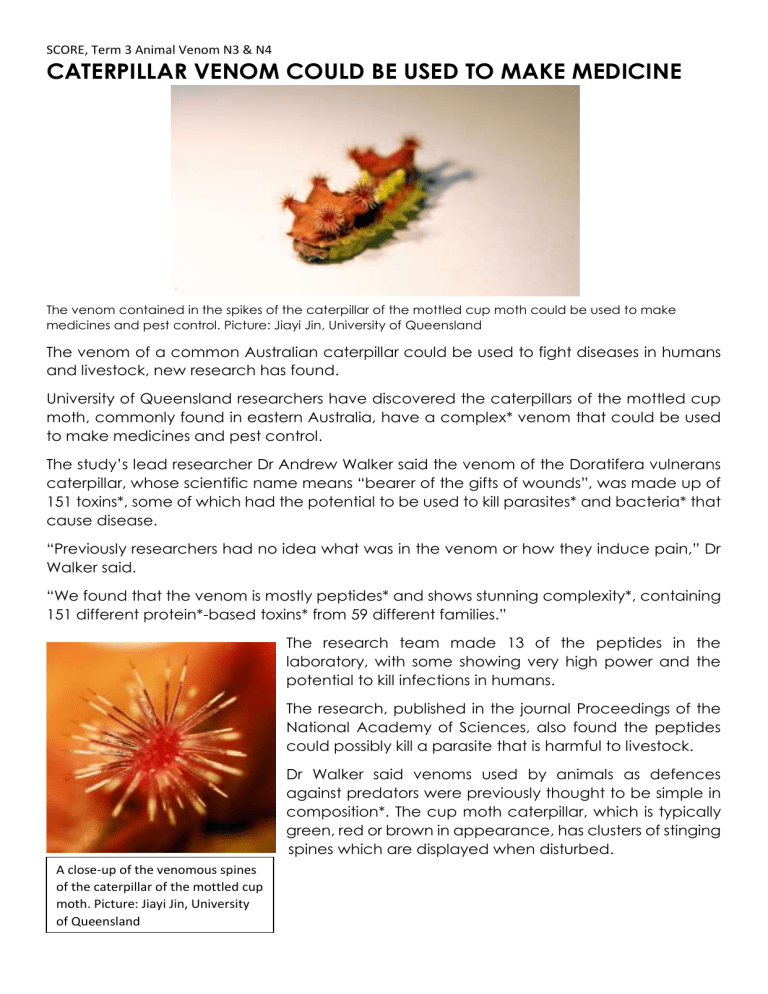
SCORE, Term 3 Animal Venom N3 & N4 CATERPILLAR VENOM COULD BE USED TO MAKE MEDICINE The venom contained in the spikes of the caterpillar of the mottled cup moth could be used to make medicines and pest control. Picture: Jiayi Jin, University of Queensland The venom of a common Australian caterpillar could be used to fight diseases in humans and livestock, new research has found. University of Queensland researchers have discovered the caterpillars of the mottled cup moth, commonly found in eastern Australia, have a complex* venom that could be used to make medicines and pest control. The study’s lead researcher Dr Andrew Walker said the venom of the Doratifera vulnerans caterpillar, whose scientific name means “bearer of the gifts of wounds”, was made up of 151 toxins*, some of which had the potential to be used to kill parasites* and bacteria* that cause disease. “Previously researchers had no idea what was in the venom or how they induce pain,” Dr Walker said. “We found that the venom is mostly peptides* and shows stunning complexity*, containing 151 different protein*-based toxins* from 59 different families.” The research team made 13 of the peptides in the laboratory, with some showing very high power and the potential to kill infections in humans. The research, published in the journal Proceedings of the National Academy of Sciences, also found the peptides could possibly kill a parasite that is harmful to livestock. Dr Walker said venoms used by animals as defences against predators were previously thought to be simple in composition*. The cup moth caterpillar, which is typically green, red or brown in appearance, has clusters of stinging spines which are displayed when disturbed. A close-up of the venomous spines of the caterpillar of the mottled cup moth. Picture: Jiayi Jin, University of Queensland SCORE, Term 3 Animal Venom N3 & N4 The spines, containing a venom similar to spiders, wasps, bees and ants, are thought to have evolved as a defence against predation* by birds and other animals. Dr Walker said the caterpillar tucked away its spines when it didn’t need them, probably to preserve its venom. But if the caterpillar was attacked by a predator or even if someone lightly brushed against it, the spines injected liquid venom that caused a sharp or burning pain similar to a bee sting. GLOSSARY 1. 2. 3. 4. 5. 6. 7. 8. 9. Mottled Cup Moth ( Doratifera vulnerans) SCORE, Term 3 Animal Venom N3 & N4 Monday ● ● Tuesday ● SKETCH WORD VOCABULARY Using the 9 panels sketch out the words from the glossary with a word which also defines it. Wednesday ● ● Individual read SUMMARY Use the 5W & H model to help you find the key points of this article. Read the article carefully to locate who and what this article is about, and where, when, why and how this is happening. Once you have located this information in the article, use it to write a paragraph that summarises the article. Thursday ● Class read Friday Teacher read Clunk words ● Record all the technical words to form the glossary and write the definition. ● QUICK QUIZ 1. Which moth are these caterpillars from? 2. Where are these moths and caterpillars found? 3. How many toxins were found in the caterpillar’s venom? 4. How does the caterpillar inject its venom? 5. Which university carried out the research? ● ● Individual read EXPERT TASK Can you identify the animals in the graphic below? Label them if you can. Next chose one and find out more on what scientists discovered about their venom. Write a list of uses science found for their venom. SCORE, Term 3 Animal Venom N3 & N4
